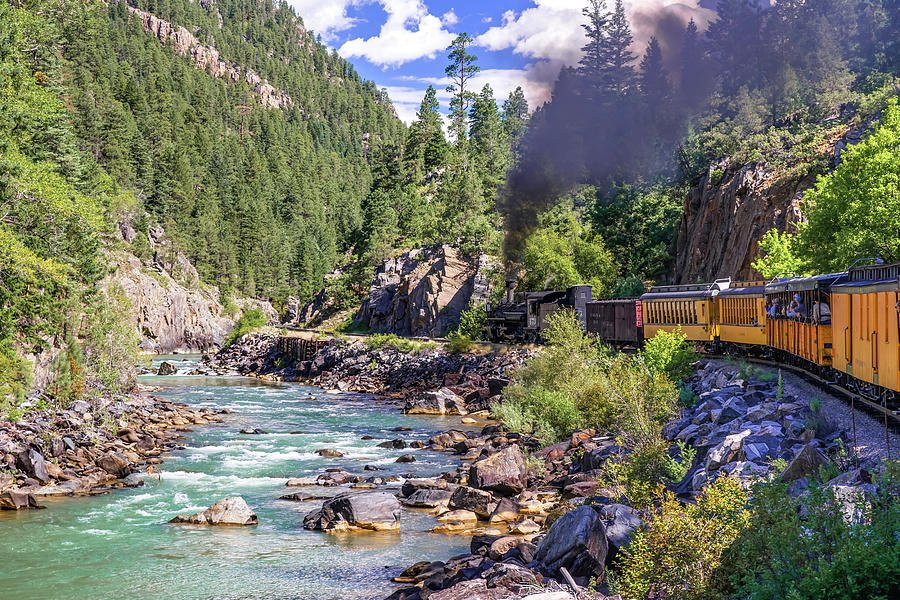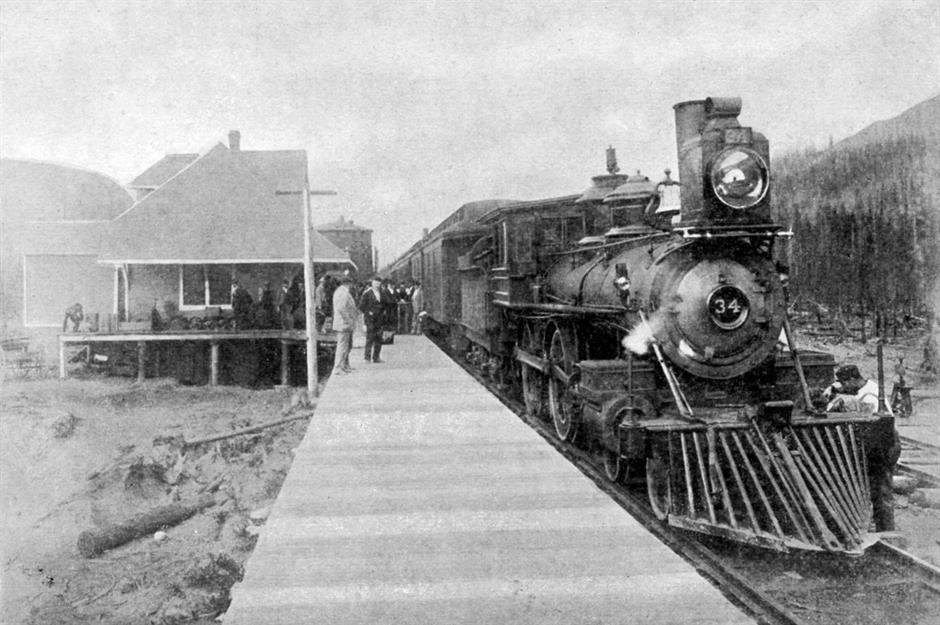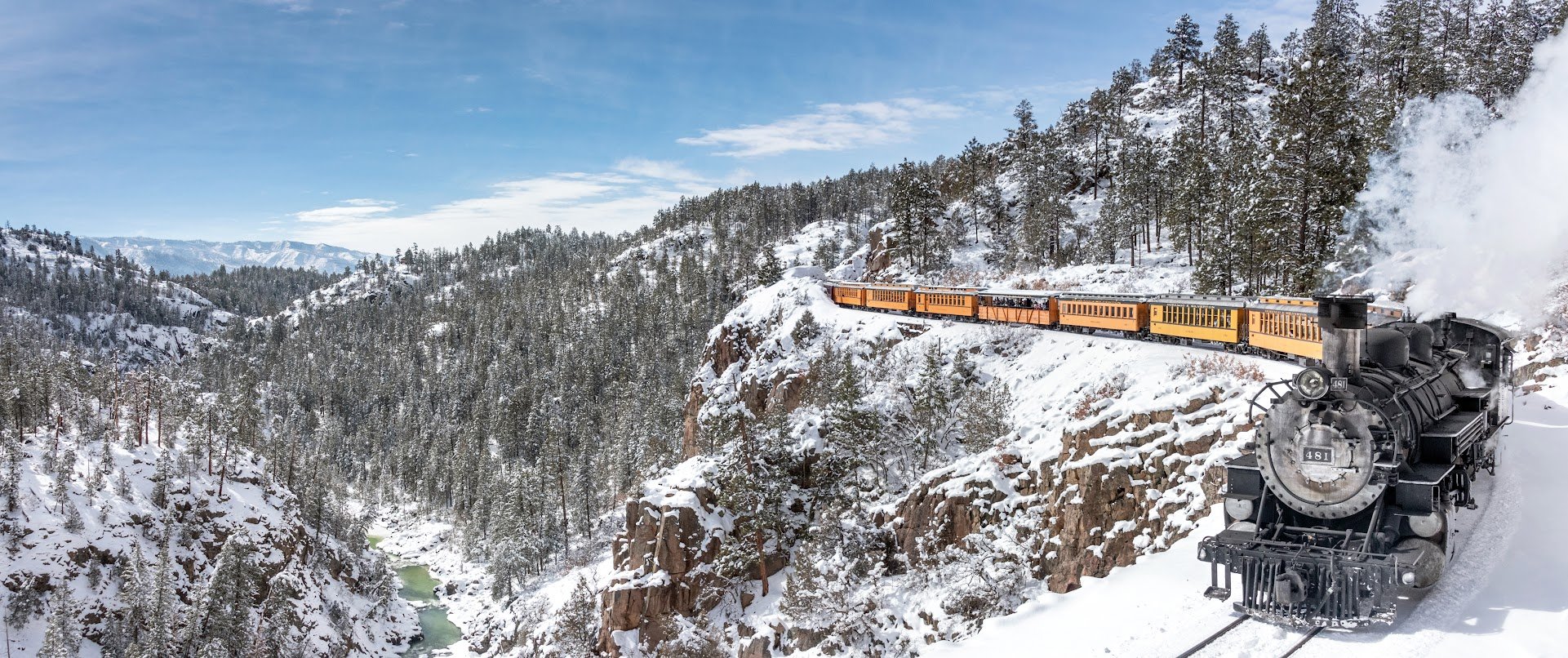CHUGGING THROUGH THE PAST
DURANGO, CO, AUGUST 27, 2023 — On a quiet Sunday morning, this anchor of Colorado’s southwest is quiet. A few cars and pickups pass but the numerous T-shirt and tourist shops are still closed. Downtown Durango sleeps. Then at 8:15 a.m., the “shreeeeee” of a steam whistle echoes from the old train depot. Listen!
And with a huff and a puff and perhaps a few “I think I cans,” a coal black locomotive heads north towards the jagged San Juan mountains. Belching white smoke, inching, crawling, straining for speed, the Denver and Rio Grande Railroad is bound for the snowbowl of Silverton (9,318 feet).
The trip will take nearly four hours. Average speed — 12 mph. But it takes time to unravel time.
The sight of an old locomotive crossing Durango stops people in, well. . . their tracks. Mothers smile. Children point. Drivers hop out of cars to take photos. With history passing before their eyes, people wave, cheer, celebrate.
France has its TGV and Japan its bullet trains. Amtrak, running a little late, struggles for respect. But America also has this — a narrow gauge railroad with a steam locomotive running daily through the mountains, just as it has run since these tracks were laid back during the heyday of Butch and Sundance in the fabled American West.
Train cars, each restored from the original 1882 coaches, feature brass handles and varnished wood paneling. The concessions car used to hold baggage. The caboose was long ago put to rest.
And each curve gives us a chance to admire the engine. A 1925 "K-36" class 2-8-2 locomotive, it steams along just as if the century of airplanes and space travel still lay far in the future.
Taking tickets, amiable conductor Ben Barker provides a little history. Despite its current cachet, he says, this train did not always seem bound for glory.
By 1881, America’s Eastern seaboard was laced with tracks. A dozen years had passed since rails first spanned the continent, but the San Juan Mountains were more formidable than the Rockies.
Canyons were steep, trees thick, avalanches a constant threat. But there was silver in them thar’ hills. Getting the ore to Durango took three days by mule. Until. . .
In August 1881, when the upstart Denver & Rio Grande finally reached Durango, construction of a route to Silverton began. Chinese and Irish immigrants, having built the Transcontinental RR, began blasting with black powder.
By late November, chiseling and carving, workers reached the flats of Rockwood, where we now stop. To the north, snowy beneath fluffy white clouds, the mountains beckoned.
On through a frigid winter and a late spring, the gritty work continued. Three-foot wide tracks demanded a ledge not much wider. And we have to keep hands inside as solid rock passes just inches from our open coach.
Up past Chicago Basin, where backpackers now get off to hike, mile after mile of track was laid. Finally on July 10, 1882, as America mourned Jesse James, the Denver and Rio Grande chugged into the tiny mining town of Silverton and began hauling silver back to Durango. What once took three days suddenly took three hours — a miracle carved in stone.
Mining duties continued until the 1920s when the ore was all but spent. For another few decades, passenger traffic kept “The Silverton” rolling, but in summers only. In 1960, owners filed with the ICC to close down. The ICC said “no.”
Owners finally sold the struggling railroad to a Florida businessman. Then throughout the 1980s, as the sawtooth San Juans opened to off-road Jeeps and zip lines, the little railroad came back to life.
Back in Durango, the original depot was restored and a museum added. In 1997, American Heritage Railways bought the line and began turning nostalgia into silver and gold.
Today, from May through October, two daily trains carry hundreds of passengers. From November to May, a “Polar Express” runs not all the way to Silverton but to Cascade Canyon, where we now gawk at soaring mountains and the roiling Animas River far below.
Occasional Cowboy Poetry trains feature recitals on board, and Valentine’s Day offers Romance on the Rails, as if there weren’t enough romance in a little train chug-chugging along a cliffedge, past the canyon walls of time.
If it all seems like a movie, it has been. The Denver & Rio Grande played itself in assorted Westerns starring John Wayne, Audie Murphy, and others. A canyon fire in 2018 ended the use of coal, whose sparks may have started the blaze, yet a fleet of locomotives continues to run on used oil.
There have been landslides. There have been avalanches. There has been a pandemic. But deep and deeper into the mountains that soar above us, the Denver & Rio Grande RR rattles on.
Just past noon, belching like a thoroughbred, wheezing like a grandfather, the train rumbles into Silverton. Crowds line the tracks as the town fills with smoke and smiles and awe.
The railroad in America, wrote historian Michael Kammen, has had a remarkable evolution — from techno-marvel (1840-1880) to corporate nemesis (1880-1930), finally becoming pure nostalgia. Along the route, from the Wabash Cannonball to the Super Chief, from Amtrak to Acela, trains have gotten us where we wanted to go.
But only one train has made the journey timeless, and its whistle should be the final word.














